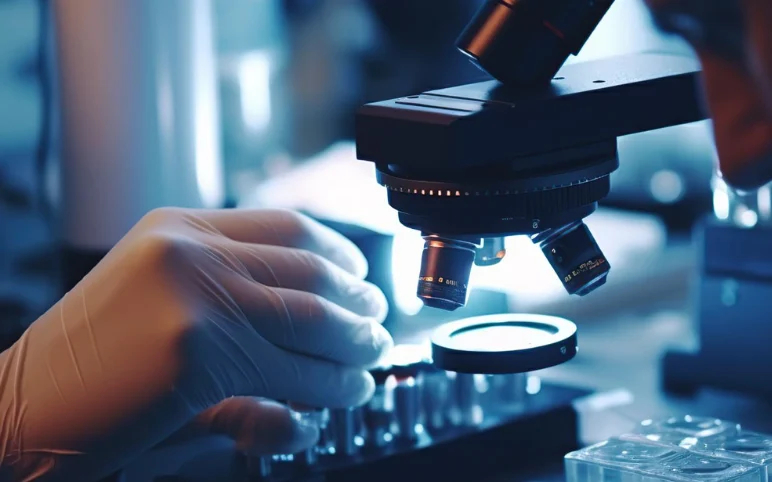Baxter Introduced New Injectable Pharmaceuticals to US Market
On April 11, 2024, the pharmaceutical portfolio of multinational medical goods corporation Baxter International Inc. was augmented with the introduction of five new injectable medications in the US market. The goods were made to fulfill essential demands in therapeutic domains like anti-hypertensive and anti-infective drugs.
Among the new products is a ready-to-use injection of norepinephrine bitartrate in 5% Dextrose, which is now available in three strengths—including a brand-new 16 mg/250 mL option—for severe, acute hypotension. This is the first and only ready-to-use formulation of its sort, according to Baxter, to receive FDA approval.
The first FDA-approved ready-to-use vasopressin in a flexible container, Vasopressin in 0.9% Sodium Chloride Injection, is another addition. It comes in two strengths. For adults with vasodilatory shock who don’t get enough fluids or catecholamines but are still hypotensive, this product is recommended.
Additionally, Baxter launched two new strengths of Vancomycin Injection, USP in 5% Dextrose, which represent the company’s first frozen ready-to-use products available in 250 mL and 300 mL quantities. Serious infections brought on by methicillin-resistant staphylococci are treated with vancomycin.
The business provides Ropivacaine Hydrochloride Injection, USP for local or regional anesthesia and acute pain management in a ready-to-use, single-dose infusion bag. Baxter has also introduced a pre-filled syringe for Regadenoson Injection, a cardiac vasodilator used in pharmacologic stress tests.
By providing ready-to-use forms of standard concentrations, these solutions seek to improve operational efficiency for healthcare practitioners by potentially lowering the risk of contamination and potential errors associated with hand compounding.
As per DelveInsight’s “Prefilled Syringes – Market Insights, Competitive Landscape, and Market Forecast – 2030” the global Prefilled Syringes market was valued at USD 11.48 billion in 2023, growing at a CAGR of 10.44% during the forecast period from 2024 to 2030 to reach USD 20.83 billion by 2030. The demand for prefilled syringes is witnessing growth due to the growing prevalence of chronic diseases and autoimmune disorders such as diabetes and rheumatoid arthritis respectively, increasing popularity of biologic drugs, rising popularity of self-administration of drugs, offer a convenient alternative to conventional syringes and vials.
Bayer and Hologic Collaborated to Deliver Contrast-Enhanced Mammography
On April 11, 2024, Bayer and Hologic, Inc. announced a first-of-its-kind collaboration to deliver a coordinated solution for contrast-enhanced mammography (CEM).
A sensitive and reasonably priced breast imaging technique that can aid in diagnosis and treatment planning for breast cancer is contrast-enhanced mammography. The product combines the top contrast-enhanced mammography contrast delivery technology from Bayer, the MEDRAD® Stellant FLEX Computed Tomography (CT) Injection technology, with the industry-leading mammography technologies from Hologic.
The first and only CT injection system 510(k) cleared with an extra contrast-enhanced mammography application is the MEDRAD Stellant FLEX CT Injection System with Certegra® Workstation. Together, Hologic and Bayer are enabling radiologists and imaging centers to purchase products more quickly and easily while also offering continuous, helpful training materials and a smooth setup experience.
“We are thrilled to work with Hologic to increase access to this emerging breast imaging modality,” said Sven Schmidt, Head of Region Americas Radiology at Bayer. “Together we will deliver an innovative and coordinated solution for both patients and healthcare professionals alike.”
According to DelveInsight’s “Mammography Devices – Market Insights, Competitive, Landscape and Market Forecast – 2030”, the global Mammography Devices market was valued at USD 1.78 billion in 2023, growing at a CAGR of 9.15% during the forecast period from 2024 to 2030, to reach USD 3.65 billion by 2030. The demand for Mammography Devices is primarily witnessing growth on account of the increasing prevalence of breast cancer, technological advancements in breast imaging, and increasing focus on creating awareness regarding routine breast cancer screening programs.
Labcorp Received FDA Emergency Use Authorization for Mpox PCR Test Home Collection Kit
On April 10, 2024, the U.S. Food and Drug Administration (FDA) granted Emergency Use Authorization (EUA) for Labcorp’s Mpox PCR Test Home Collection Kit to aid in the diagnosis of infection with non-variola Orthopoxvirus, including the monkeypox virus that causes monkeypox, also known as mpox.
Labcorp is a global leader in innovative and comprehensive laboratory services. Physicians who think their patients, who are 18 years of age or older, have the option to purchase the test, which is the first mpox at-home collection kit approved by the FDA.
Physicians who suspect a patient may be infected with the virus can order a test through Labcorp’s provider interface platform. Patients can find comprehensive instructions in the Labcorp kit on how to properly gather a lesion swab, secure the sample in the included collection tube, and be ready to send the package back to an approved laboratory for examination.
PCR technology will be used in the testing of specimens acquired using the test kit, and the authorized laboratories specified by Labcorp will carry out the high-complexity testing criteria for the detection of non-variola Orthopoxvirus DNA. Additionally, the exam will be made available on the company’s Labcorp OnDemand platform.
“The FDA’s emergency authorization of Labcorp’s Mpox PCR Test Home Collection Kit will enable us to play a vital role within the healthcare community in the early detection and management of mpox,” said Dr. Brian Caveney, Labcorp’s chief medical and scientific officer. “The collection kit reflects our ongoing commitment to providing critical diagnostic tools to physicians and accessible and convenient testing options to patients.”
According to DelveInsight’s “Polymerase Chain Reaction – Market Insights, Competitive Landscape, and Market Forecast – 2030”, the global Polymerase Chain Reaction market was valued at USD 4.90 billion in 2023, growing at a CAGR of 8.66% during the forecast period from 2024 to 2030 to reach USD 8.04 billion by 2030. The Polymerase Chain Reaction market is slated to witness increasing revenue owing to factors such as a rise in the prevalence of diseases caused by pathogens, increasing applications in the field of clinical diagnostics, along with latest technological advancements to further enhance its accuracy is expected to result in appreciable revenue growth in the Polymerase Chain Reaction market during the forecast period (2024-2030).
Onkos Surgical Won FDA De Novo Nod For Antibacterial-Coated Orthopedic Implants
On April 9, 2024, Onkos Surgical announced that it received FDA de novo approval for its antibacterial coated implants.
The company claimed that in orthopedic oncology and revision arthroplasty, bacterial infection of a permanent implant could have disastrous consequences. According to Onkos Surgical, a substantial amount of preclinical safety and efficacy data was produced in order to bolster the de novo application.
According to the findings, the coating is bactericidal and has been shown to not elute. In vitro tests using bacteria from the operation area revealed a 99.9% kill rate. Human clinical trials have not demonstrated the efficacy of the antibacterial coating in preventing or lowering infection rates.
Orthobond is seeking to collaborate with other device makers and has already received FDA de novo approval for another implant covered using its technology.
“Implant contamination is a growing concern to the orthopaedic surgical community,” said Dr. Steven Gitelis, the Chief Medical Officer. “When bacteria contaminate the artificial joint, it can lead to a cascade of issues that can significantly impact the patient’s health. The current tools in our armamentarium are simply not enough to help solve this multifactorial problem. The increasing prevalence of joint procedures underscores the importance of implementing effective strategies to address the presence of bacteria. The Onkos technology is a significant innovation and another option to help reduce local bacterial load on the implant.”
“Receiving De Novo approval to market this technology represents a significant milestone for our surgeon customers and the patients they care for,” CEO and Co-founder Patrick Treacy said. “When it comes to implant bacterial contamination and failure, patient complications may include decreased limb function, amputation, and increased rates of mortality. We are proud to bring this meaningful solution to the market and we look forward to working with the regulatory agencies to expand the application of the technology across our portfolio of market-leading personalized and limb reconstructive implants. This exciting technology has the potential to be one of the most important advances in orthopedic medical devices in decades.”
According to DelveInsight’s “Orthopedic Implants – Market Insights, Competitive Landscape, and Market Forecast – 2030”, the global orthopedic implants market is estimated to grow at a CAGR of 5.46% during the forecast period from 2024 to 2030. The orthopedic implants market is slated to witness prosperity owing to factors such as the increasing prevalence of orthopedic diseases such as arthritis, osteoporosis, and others, a growing burden of the geriatric population, the rising number of road accidents associated and other injuries, and the growing focus on improving the safety, affordability, and usability of orthopedic implants for people are further expected to result in the appreciable revenue growth in the orthopedic implants market during the forecast period (2024-2030).
Heartbeam Presented Positive Results On Its Artificial Intelligence Capabilities For Detecting Arrhythmias
On April 12, 2024, HeartBeam, Inc., a medical technology company that aims to transform cardiac care by utilizing personalized insights, released new data that showed that using its artificial intelligence (AI) algorithms in vector cardiography (VCG) significantly improves atrial flutter detection over single-lead electrocardiograms (ECGs) and performs similarly to 12-lead ECGs, which are the gold standard for atrial flutter diagnosis.
Without compromising its ability to distinguish between those who do not have atrial flutter (specifically of 98.7% for VCG vs. 96.9% for single-lead ECG), HeartBeam AI with VCG showed a 28% improvement over single-lead ECG in the detection of atrial flutter cases (sensitivity of 91.0% for VCG vs. 71.2% for single-lead ECG).
Using three projections (X, Y, and Z) similar to VCG, HeartBeam’s core vector electrocardiography (3D VECG) technology records the heart’s signals and creates a 12-lead ECG. The technology is intended to be utilized with HeartBeam’s compact, lightweight, and user-friendly devices, which enable remote cardiac monitoring. The HeartBeam AIMIGo, a credit card-sized device for patient use at home or anywhere, is the company’s first planned use of the 3D VECG platform technology. It is presently undergoing FDA approval.
A single-lead ECG collects significantly less data than the HeartBeam technology. As data of great diagnostic value is gathered over time from the same patients using the device, HeartBeam believes it will be able to improve diagnostic accuracy by leveraging AI to analyze these data-rich signals. The technology also has the potential to extract unique information that may go beyond today’s 12-lead ECGs. According to HeartBeam, this is a rare chance to build an extensive data collection that can yield individualized AI-driven insights to enhance cardiac care.
“The intent of our AI program is to leverage our novel VECG platform to unlock detection and prediction capabilities currently limited to healthcare facilities and make them readily accessible and available to the patient, and this new data is a clear example of what we can accomplish,” said Branislav Vajdic, PhD, CEO and Founder of HeartBeam. “As we continue to expand our artificial intelligence capabilities, we look forward to demonstrating how the combination of our data rich 3D VECG platform with HeartBeam AI has the potential to transform how cardiac health is managed in the future.”
According to DelveInsight’s “Cardiac Arrhythmia Monitoring Devices – Market Insights, Competitive Landscape, and Market Forecast – 2030”, the global cardiac arrhythmia monitoring devices market will grow at a CAGR of 6.33% during the forecast period from 2024 to 2030. The increase in demand for cardiac arrhythmia monitoring devices is primarily attributed to the rising prevalence of cardiovascular diseases, rising expenditure on cardiac health globally, rising adoption of mobile and telemetry cardiac monitors, rising prevalence of cardiac arrhythmias, rising technological advancements in monitoring devices, among others are also expected to bolster the demand for these services during the forecast period (2024-2030).
Cognito Therapeutics Showed Positive Non-Invasive Neuromod Results
On April 15, 2024, Cognito Therapeutics announced treatment results from an open-label extension study of its Alzheimer’s treating neuromodulation system.
The Spectris technology from the Cambridge, Massachusetts-based business may be able to treat Alzheimer’s disease using a disease-modifying medication. Its non-invasive neuromodulation apparatus stimulates with sound and light at gamma frequencies. This induces gamma frequency brain oscillations that are proven by EEG to treat disorders of the central nervous system (CNS).
OVERTURE I was a six-month randomized clinical trial; it was followed by OVERTURE II, a 12-month research. It examined prolonged Spectris medication during an 18-month period and recruited 83% of Overture I participants. A delayed-start analysis was utilized in the trial to assess Spectris’s potential as a medication that modifies illness.
Throughout the course of the 12-month OVERTURE II study, Cognito found that there was a statistically significant separation of daily life tasks. The rate of decrease in activities of daily living was similar among patients who transitioned from receiving sham therapy in OVERTURE I to active device treatment in OVERTURE II. Comparing whole brain volume to ongoing active treatment also showed similar results. The business claimed that patients who had delayed treatment fell behind the early treatment cohort.
These findings imply that the pooled Spectris results met established standards for illness modification. According to Cognito, the outcomes also favor early intervention. Furthermore, OVERTURE II showed no significant side effects associated to treatment, according to the business. Like OVERTURE I, it reported high device adherence (80%).
“Clinical studies to date with Spectris have demonstrated high levels of adherence among patients while also showing the potential of Spectris as a disease-modifying therapy,” said Dr. Ralph Kern, chief medical officer of Cognito Therapeutics. “This innovative therapy has the potential to be seamlessly integrated as a home-based treatment into the lives of patients and caregivers.”According to DelveInsight’s “Neuromodulation Devices – Market Insights, Competitive Landscape, and Market Forecast – 2030”, the global neuromodulation devices market was valued at USD 5.71 billion in 2023, growing at a CAGR of 8.95% during the forecast period from 2024 to 2030, to reach USD 9.56 billion by 2030. The demand for neuromodulation devices is primarily motivated by the increasing prevalence of neurological disorders coupled with the rising aging population, expansion of the devices to other chronic indications and target applications, technological advancement in the product portfolio, rising government initiatives to raise awareness among patient regarding neurological disorders, among others.



